Wash Silk Like a Pro: Gentle Care for Lasting Beauty
Do you adore your silk garments but fear damaging them with improper washing techniques? The uncertainty around caring for this delicate fabric can be stressful, leading many to rely on expensive dry cleaning services. However, knowing how to properly wash silk is vital for its longevity, maintaining its luxurious feel, and preventing costly damage.
This guide will empower you with the confidence and knowledge to safely wash your silk garments at home. With step-by-step instructions for both hand and machine washing, expert stain removal advice, and essential drying tips, you can ensure your silk items remain in pristine condition, preserving your investment and saving money on professional cleaning.
1. The ultimate guide on how to wash silk at home: keep your delicates luxurious
Silk, with its unparalleled luxury and delicate nature, often evokes apprehension when it comes to washing. Many fear damaging this precious fabric, opting instead for costly dry cleaning. However, washing silk at home is entirely achievable with the right approach.
Proper care, employing gentle techniques and understanding its unique properties, ensures your silk garments not only retain their beauty but last a lifetime, becoming cherished pieces in your wardrobe.
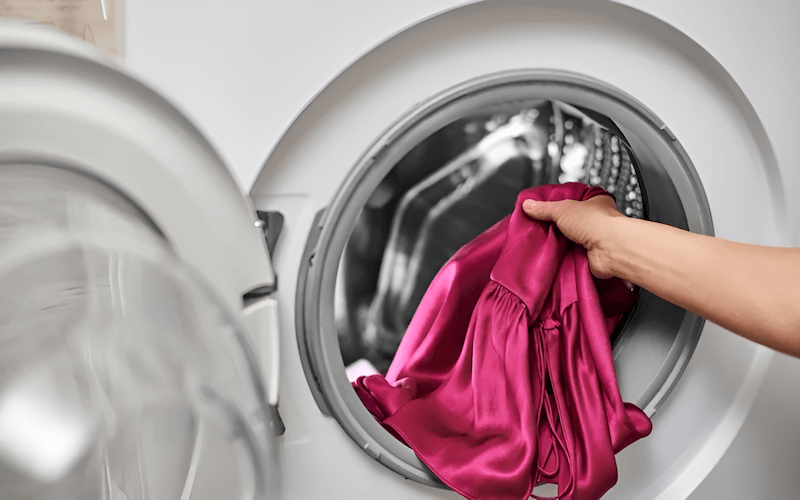
2. Decoding the care label: your first step to successfully washing silk
2.1 Always check the care label first
Before even considering washing your silk garment, carefully examine the care label. This label provides crucial instructions regarding washing, drying, and ironing, often presented through specific symbols. Understanding these symbols is the first step to successful silk care. While care labels offer recommendations, it’s worth noting that with caution and a colorfastness test, gentle home washing can sometimes work even for items labeled “dry clean only”.
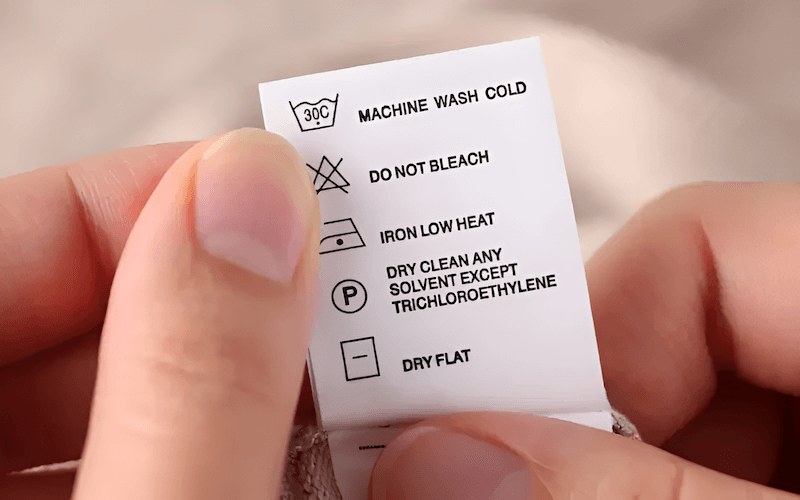
2.2 Understanding “dry clean only” vs. “hand washable” silk
Care labels clearly distinguish between “Dry Clean Only” and “Hand Washable” silks. While some silks genuinely require professional dry cleaning, others marked “Dry Clean Only” can be carefully hand-washed. Exercise extra caution with vintage or embellished silk garments, as dry cleaning is generally a safer option for these delicate pieces.

3. Essential preparations before washing silk: colorfastness and sorting
3.1 The colorfastness test: preventing disastrous bleeding
To prevent color bleeding and potential garment damage, always perform a colorfastness test before washing silk. This test involves dabbing an inconspicuous area of the garment with a damp white cloth. If any dye transfers to the cloth, the garment is likely to bleed and should be dry cleaned. For patterned or brightly colored silks, test in multiple hidden spots to ensure accurate results.

3.2 Sorting silk like a pro: colors and garment types
Sorting silk correctly is vital for protecting its delicate fibers. Wash like colors together (navy and black, ivory and pale pink), and always separate silk from heavy items like jeans that can cause damage. For machine washing, place silk garments in mesh bags to protect them from snags and tears, especially for embellished items. If heavily soiled, wash silk separately, even if colorfast, to prevent dye transfer in the dirty water.
4. Hand washing silk: the gentlest method for delicate fibers
4.1 Gathering your supplies: gentle detergent and more
Hand washing is the gentlest method for cleaning silk and requires specific supplies: a clean washing basin, cool water, a gentle detergent specifically designed for silk or delicates, and optionally, white vinegar or lemon juice for rinsing. Regular detergents are often too harsh for silk fibers, so it’s best to avoid them. pH-neutral detergents and mild baby shampoo are suitable alternatives.
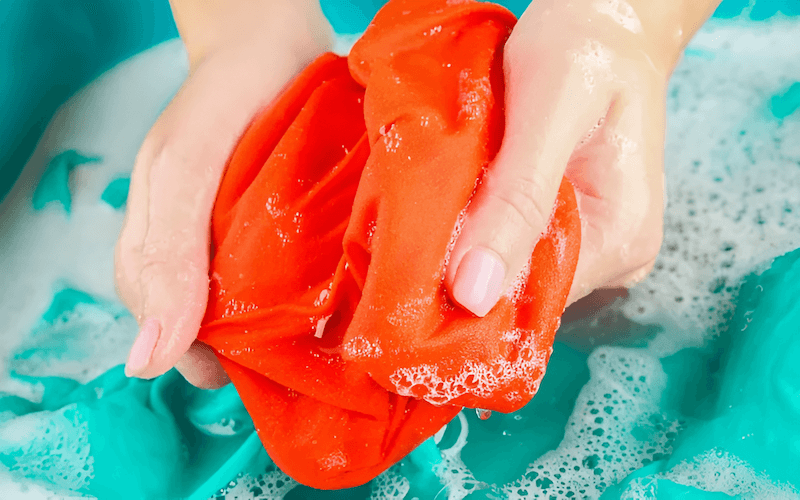
4.2 Step-by-step hand washing guide for silk
To hand wash silk, follow these steps: turn the garment inside out, fill the basin with cool water, add a small amount of gentle detergent, and submerge the silk. Soak for a short period (5-30 minutes, typically shorter for lightly soiled items), then rinse thoroughly in cold water until clear. Gently press out excess water, avoiding any wringing or twisting motions. For optimal results, use gentle agitation, such as circular motions, and shorter soak times.
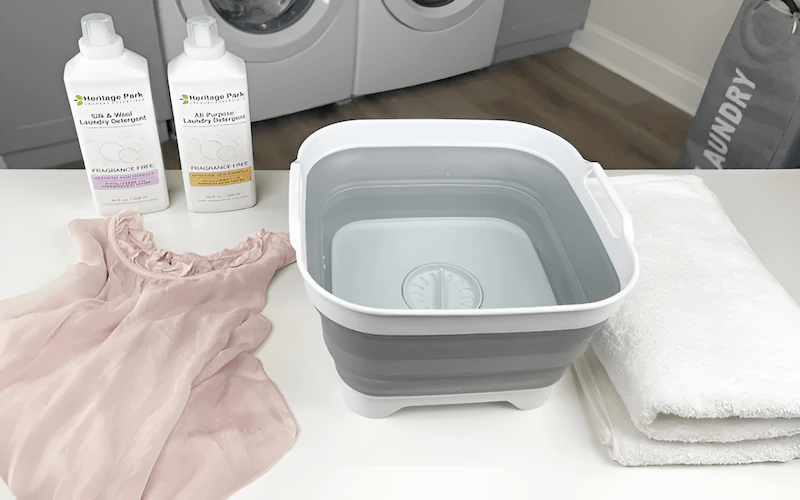
4.3 Rinsing and gentle water removal techniques
Rinse the silk garment in cold water until all traces of detergent are gone. To remove excess water, gently press the garment between your hands or against the side of the sink. You can also roll the silk in a clean, dry towel to absorb the water. Always avoid wringing or twisting the fabric, as excessive squeezing can damage the delicate fibers. Focus on blotting and gentle pressing to protect your silk.
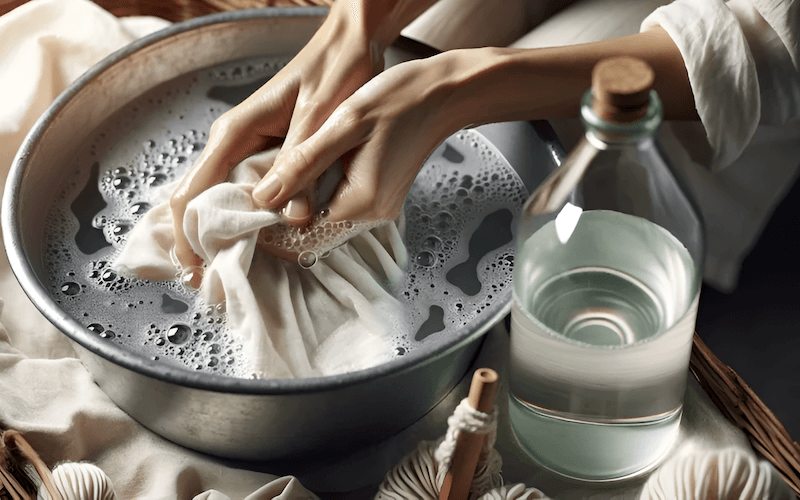
5. Machine washing silk: when and how to use your washing machine safely
5.1 Is your silk machine washable? Checking the care label again
Before machine washing silk, double-check the care label to confirm that it is indeed machine washable. Remember that not all silk is suitable for machine washing, so carefully reading the label is essential. Be cautious with machine washing, reserving it for items specifically labeled as machine washable or for less delicate silks.
5.2 Setting up your washing machine for silk: delicate cycle is key
If your silk is machine washable, proper machine settings are crucial. Always use the delicate cycle, with cold water (maximum 30°C/85°F), and a low spin speed. Cold water helps prevent shrinkage and fading, while a low spin protects the delicate silk fibers from damage. For added protection, always use a mesh bag for machine washing silk, and reduce the amount of detergent slightly.
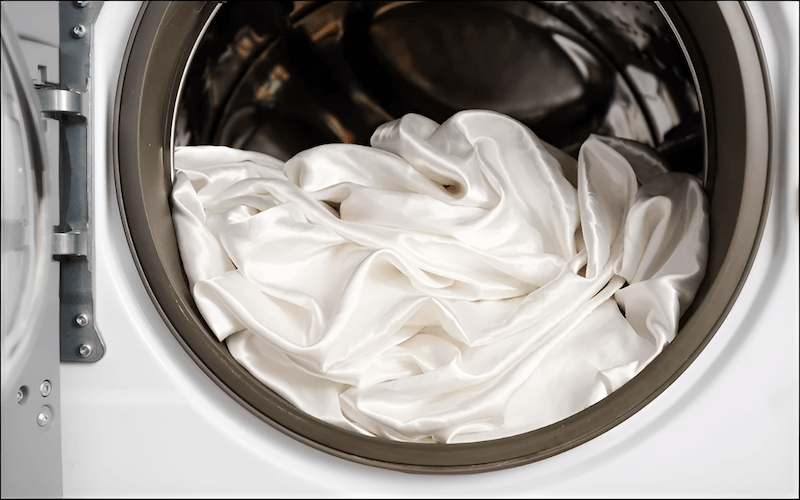
5.3 Step-by-step machine washing guide for silk
To machine wash silk, follow these steps: turn the garment inside out, place it in a mesh bag, select the delicate cycle, use cold water, and add a gentle detergent specifically designed for silk. Once the cycle is complete, remove the garment promptly. Avoid using fabric softener on silk, and consider adding a small amount of white vinegar to the rinse cycle to remove any detergent residue and restore the silk’s natural shine.
6. Drying silk: air drying is essential for preserving quality
6.1. The importance of air drying: no tumble dryers!
Air drying is absolutely essential for preserving the quality of silk. Never, ever put silk in a tumble dryer. The high heat can cause irreversible shrinkage, fiber damage, and a loss of the silk’s luxurious sheen. Avoid even “low heat” dryer settings; air drying is the safest option.
6.2. Best air drying techniques: flat drying vs. hanging
There are two primary air-drying techniques for silk: flat drying and hanging. For delicate items that are prone to stretching, flat drying is recommended, as it prevents the fabric from distorting under its own weight. For blouses and dresses, hanging on a padded hanger is generally suitable. For heavier or stretch-prone silk items, flat drying is recommended. Use wide hangers

6.3. Avoiding sunlight and heat during drying
Protect your silk from direct sunlight and heat during the drying process. Sunlight can cause fading and damage to the silk fibers, while heat can lead to shrinkage. Dry the garment indoors or in a shaded, well-ventilated area, away from direct sunlight and heat sources like radiators and heaters.
7. Tackling stains on silk: gentle spot treatment is key
7.1. Acting fast: the key to successful stain removal
When it comes to stain removal on silk, acting quickly is key to success. Fresh stains are much easier to remove than those that have set in over time. If possible, treat stains immediately to prevent them from becoming permanent.
7.2. Gentle stain removal solutions: water, vinegar, lemon juice
For stain removal on silk, use gentle solutions like cool water, diluted white vinegar, or lemon juice. Harsh stain removers and bleach can damage the delicate silk fibers, so it’s best to avoid them. Before applying any solution, always test it on a hidden area of the garment to ensure it doesn’t cause discoloration or damage. To avoid harming the material, always blot from the back to push the stains out.
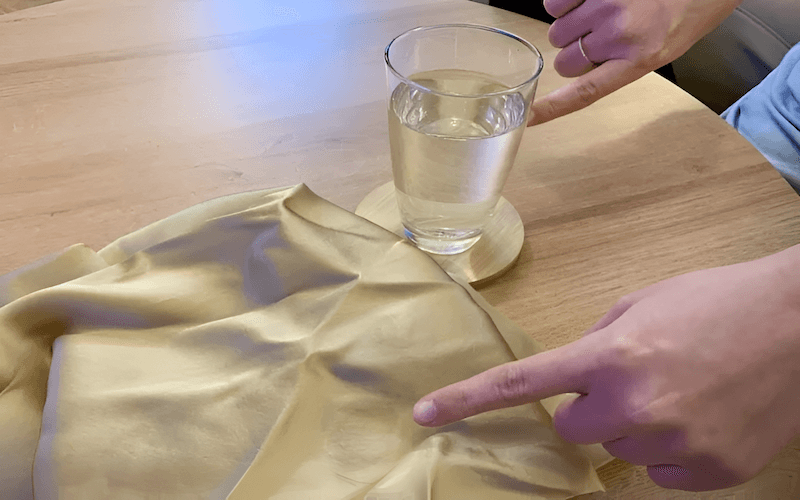
7.3. Step-by-step spot treatment guide for silk stains
To spot treat silk stains, follow these steps: first, test the chosen stain removal solution on a hidden area of the garment. If it’s safe to use, apply a small amount of the solution to the stain with a clean sponge or cloth. Blot the stain gently, working from the outside in, and then rinse the area with cool water. Remember to always blot gently, avoiding rubbing, and if the stain persists, seek professional dry cleaning.
8. Ironing and steaming silk: finishing touches for a polished look
8.1. Ironing silk: low heat and protective cloth are crucial
If ironing silk, always use a low heat setting (the silk setting if your iron has one), turn the garment inside out, and iron the dry silk with a protective cloth between the iron and the fabric. These steps will prevent scorching and water spots. Remember to test the iron temperature on a hidden area of the garment before ironing the entire piece.
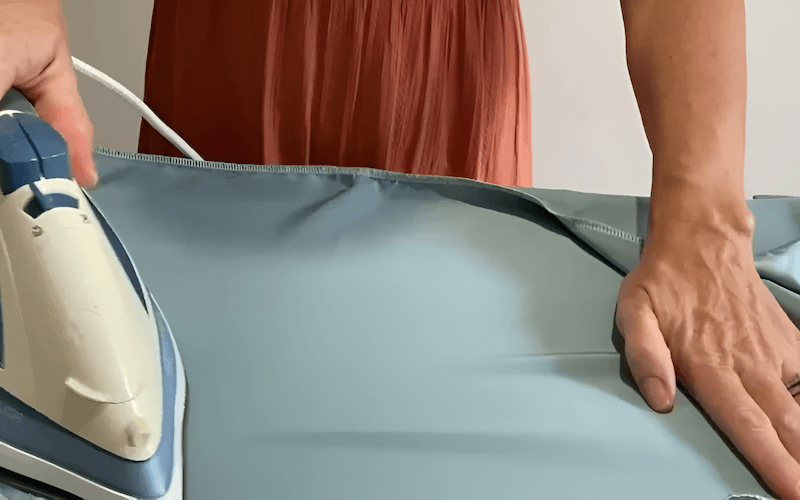
8.2. Steaming silk: a gentler alternative for wrinkle removal
Steaming is a gentler alternative to ironing for removing wrinkles from silk. Use a vertical steamer or an iron on the steam setting, hovering it slightly above the fabric. If possible, steaming is the preferred method, as it can help restore the silk’s natural luster. However, be cautious about the steamer spitting water, which can cause spots. If this happens, dunk in cool water and dry.
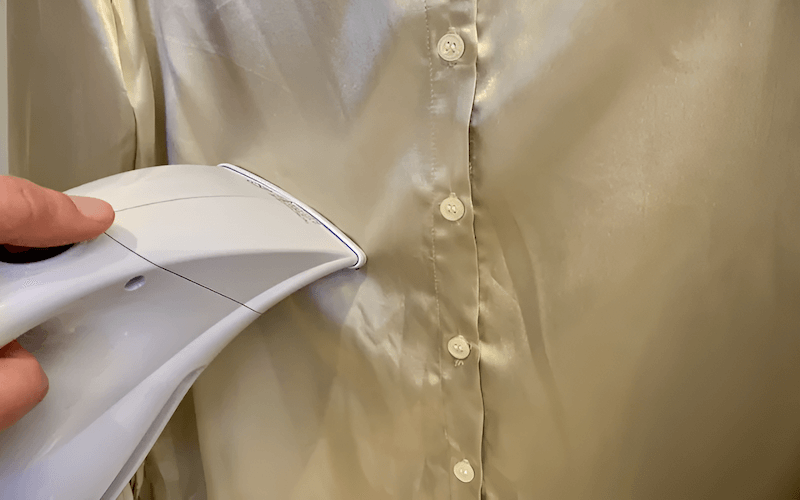
9. Storing silk: protecting your delicate garments long-term
9.1 Best practices for everyday silk storage
For everyday silk storage, hang your garments on padded hangers in a cool, dry place away from direct sunlight. This will help prevent creases and protect the delicate fibers. Use wide hangers to prevent shoulder creases, and fold silk knitwear to prevent stretching.

9.2 Long-term silk storage: protecting from moths and damage
Before storing silk for an extended period, be sure to clean it thoroughly. Store the garments in breathable garment bags made of cotton or linen (avoid plastic bags for long-term storage). To protect silk from moths, consider using natural moth repellents like lavender or cedar. Emphasize breathable storage to prevent mildew and avoid damp basements and hot attics.
10. FAQs About washing silk
10.1 Can I machine wash all types of silk?
No, you cannot machine wash all types of silk. Always check the care label first. Delicate silks are best hand-washed or dry cleaned. Machine wash only if indicated, using a delicate cycle and mesh bag.
10.2 What is the best detergent to use for washing silk?
The best detergent for washing silk is one specifically designed for silk or delicate fabrics. Look for pH-neutral, gentle formulas. Mild baby shampoo is also a good alternative. Avoid harsh detergents, bleach, and fabric softeners.
10.3 How often should I wash silk garments?
Wash silk garments only when needed. Over-washing can shorten their lifespan. Air out your silk garments between wears and spot clean minor stains. Wash after a few wears or if the garment is soiled or smells.
10.4 How do I prevent silk from shrinking when washing?
To prevent silk from shrinking when washing, always use cold water for both washing and rinsing. Avoid hot water and tumble dryers, which can cause significant shrinkage. Air dry your silk garments instead.
11. Packlove – Providing garment care solutions for your delicate fabrics
At Packlove, with over 8 years in the garment industry, we understand the importance of proper garment care to maintain the beauty and longevity of delicate fabrics like silk. Our expertise in the industry allows us to provide not only quality labels and tags for your clothing but also valuable information on how to care for your garments properly. To learn more about our products and services, please visit mypacklove.com.
Read more:
In closing, mastering the art of silk care ensures your delicate garments remain beautiful and luxurious for years to come. By adopting gentle washing techniques, prioritizing air drying, addressing stains with care, employing appropriate ironing and steaming methods, and storing your silk pieces correctly, you can confidently preserve their exquisite quality. With these tips, you’ll be equipped to enjoy the luxurious feel and timeless elegance of your silk garments for years to come.






















